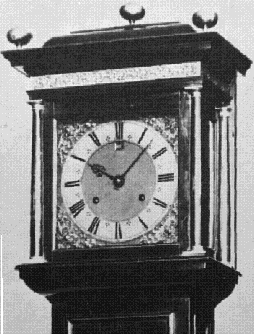
| WWT Shows | CLICK TO: Join and Support Internet Horology Club 185™ | IHC185™ Forums |

|
• Check Out Our... • • TWO Book Offer! • |
Welcome Aboard IHC185™  Internet Horology Club 185
Internet Horology Club 185  IHC185™ Discussion Site Main Page
IHC185™ Discussion Site Main Page  Horological Discussions, Questions and Answers
Horological Discussions, Questions and Answers  Clocks, Including 400-Day Discussions
Clocks, Including 400-Day Discussions  Question of the Week #4
Question of the Week #4
 Internet Horology Club 185
Internet Horology Club 185  IHC185™ Discussion Site Main Page
IHC185™ Discussion Site Main Page  Horological Discussions, Questions and Answers
Horological Discussions, Questions and Answers  Clocks, Including 400-Day Discussions
Clocks, Including 400-Day Discussions  Question of the Week #4
Question of the Week #4Go  | New Topic  | Find-Or-Search  | Notify  | Tools  | Reply to Post  |  |
Please do not post the answer. I will do so next Sunday. You go into a museum and see a late 17th century clock that has an odd figure on the chapter ring. The Roman numeral IV instead of the usual IIII. The question: What else would you expect to be different about this clock? I'll tell you Sunday, Joe | |||
|
Answer to this question. If the clock you were looking at was made by John or Joseph Knibb or Daniel Quare it is likely to have Roman Striking. This system, attributed to Joseph Knibb, was devised to reduce the number of strokes required to strike the hours and half hours. Twelve hours required only 30 blows with this system as opposed to 78 blows using common system. The first use of Roman Striking was about 1685 and the last known use was about 1710. The latter was in a clock by Quare. During the period of use the brothers Knibb were making one month and three month duration tall clocks so it is easy to see the advantage of using a system with greatly reduced strokes. Below is the sequence of the bells. The small dot is the I's and the large dot represents V,s. Hope I am not boring the everyone with this series. Joe  | ||||
|
Here is a picture of the hood and dial of Joseph Knibb, month running long case clock showing the IV on the chapter ring. The references for this question and answer was found in 'In Quest of Clocks' by Kenneth Ullett published by Spring Books. Joe  | ||||
|
Thanks Joseph for the answer.Interesting posts. keep the questions coming. | ||||
|
Verey interesting Joseph. I had heard of Roman Strike, but had not seen the explanataion. Your posts are interesting and very appreciated. Tom | ||||
|
| Powered by Social Strata |
| Your request is being processed... |
|
©2002-2025 Internet Horology Club 185™ - Lindell V. Riddle President - All Rights Reserved Worldwide

